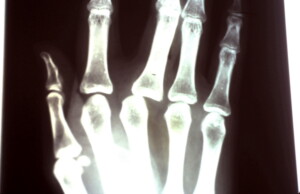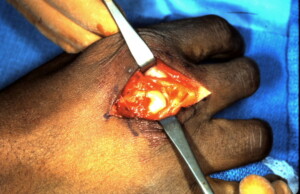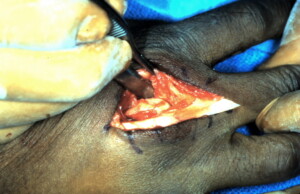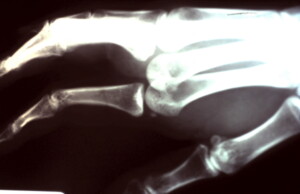MCP Joint Dislocation Torn RCL
Metacarpo-phalangeal joint dislocations with collateral ligament injury (sprain) are relatively uncommon injuries especially on the central digits since they are in a relatively protected position within the hand. That is why it is more commonly seen on the border digits i.e. index and little fingers. It is generally caused by a hyperextension force tearing the volar plate. If an additional lateral force was applied injury to the collateral ligament is also possible. The dislocation may be easily reducible (i.e., simple) or require surgical intervention (i.e., complex). The flexor tendons, lumbrical muscle, natatory ligament, and superficial transverse metacarpal ligament combine with the displaced volar plate to create a tight noose, preventing reduction. Surgical approach may be dorsal or volar; however, the radial digital nerve to the index finger is especially at risk through the volar approach.
Technique for performing a reduction on a simple dislocation.
- Flex wrist
- Hyperextend dislocated joint as far as possible
- Push base of proximal phalanx distally
- Bring joint back into flexion while pushing base
- Avoid simple traction (risk of complex dislocation)
Lateral x-ray showing dorsal dislocation of proximal phalanx relative to the metacarpal head of the right middle finger.
 AP view revealing ulnar displacement of the proximal phalanx hinting at the possibility of radial collateral ligament tear along with the dorsal dislocation.
AP view revealing ulnar displacement of the proximal phalanx hinting at the possibility of radial collateral ligament tear along with the dorsal dislocation.
 Dorsal approach was used for this complex dislocation of the right middle finger. The joint was reduced after longitudinally splitting the volar plate.
Dorsal approach was used for this complex dislocation of the right middle finger. The joint was reduced after longitudinally splitting the volar plate.
 The radial collateral ligament is seen avulsed from the head of the metacarpal. Suture repair was performed. Protected in 20-30 degrees of flexion postoperatively for two – three weeks and then early range of motion, buddy taped to index finger.
The radial collateral ligament is seen avulsed from the head of the metacarpal. Suture repair was performed. Protected in 20-30 degrees of flexion postoperatively for two – three weeks and then early range of motion, buddy taped to index finger.




